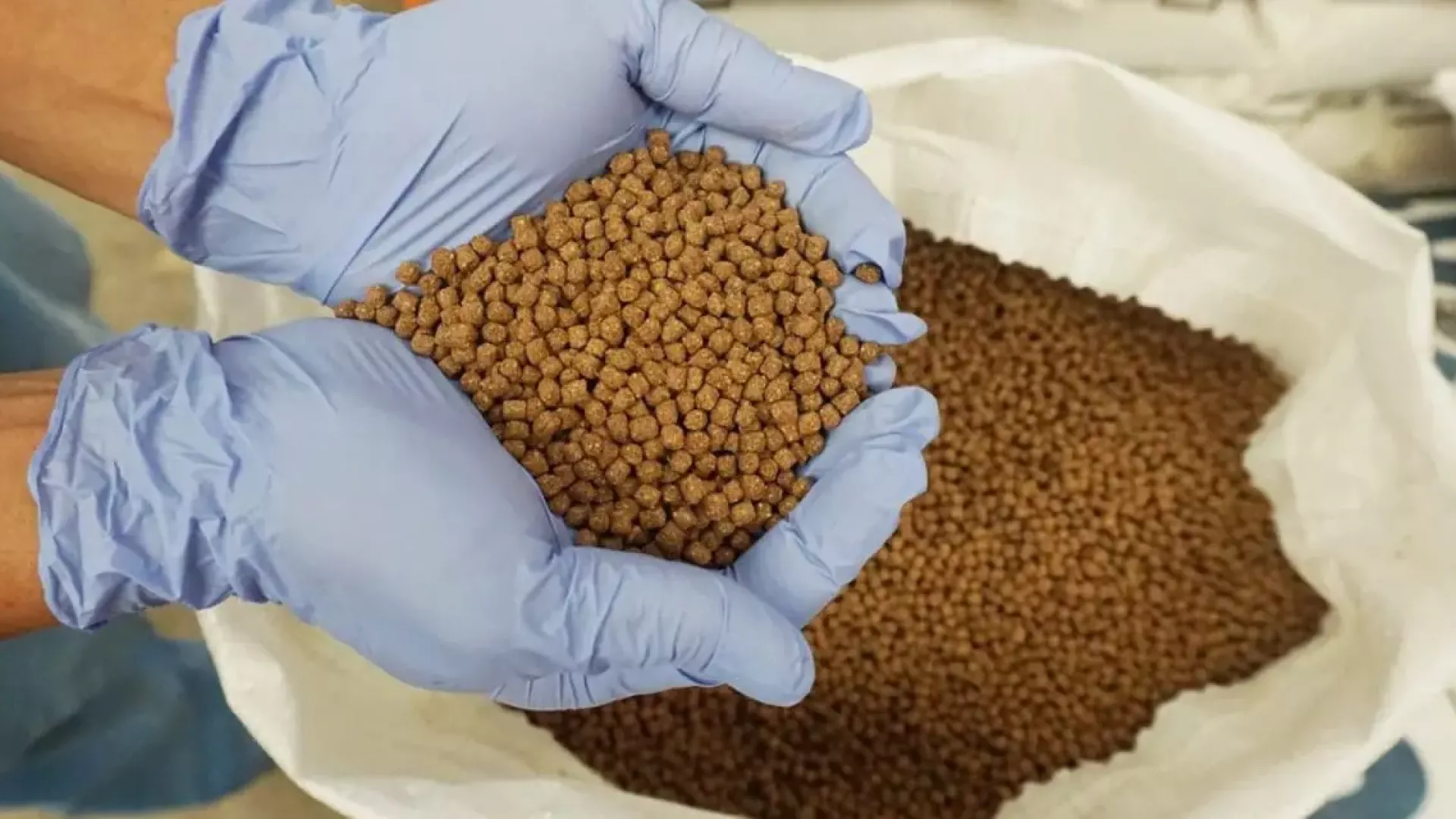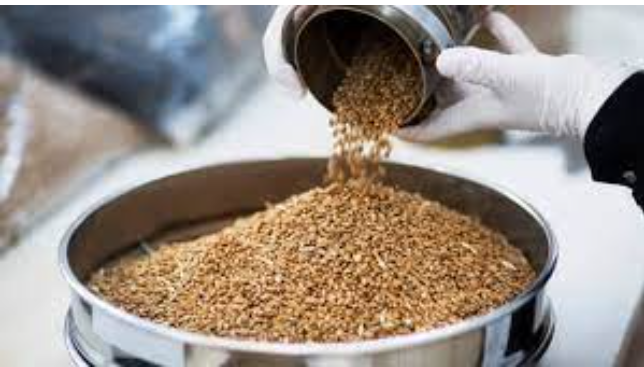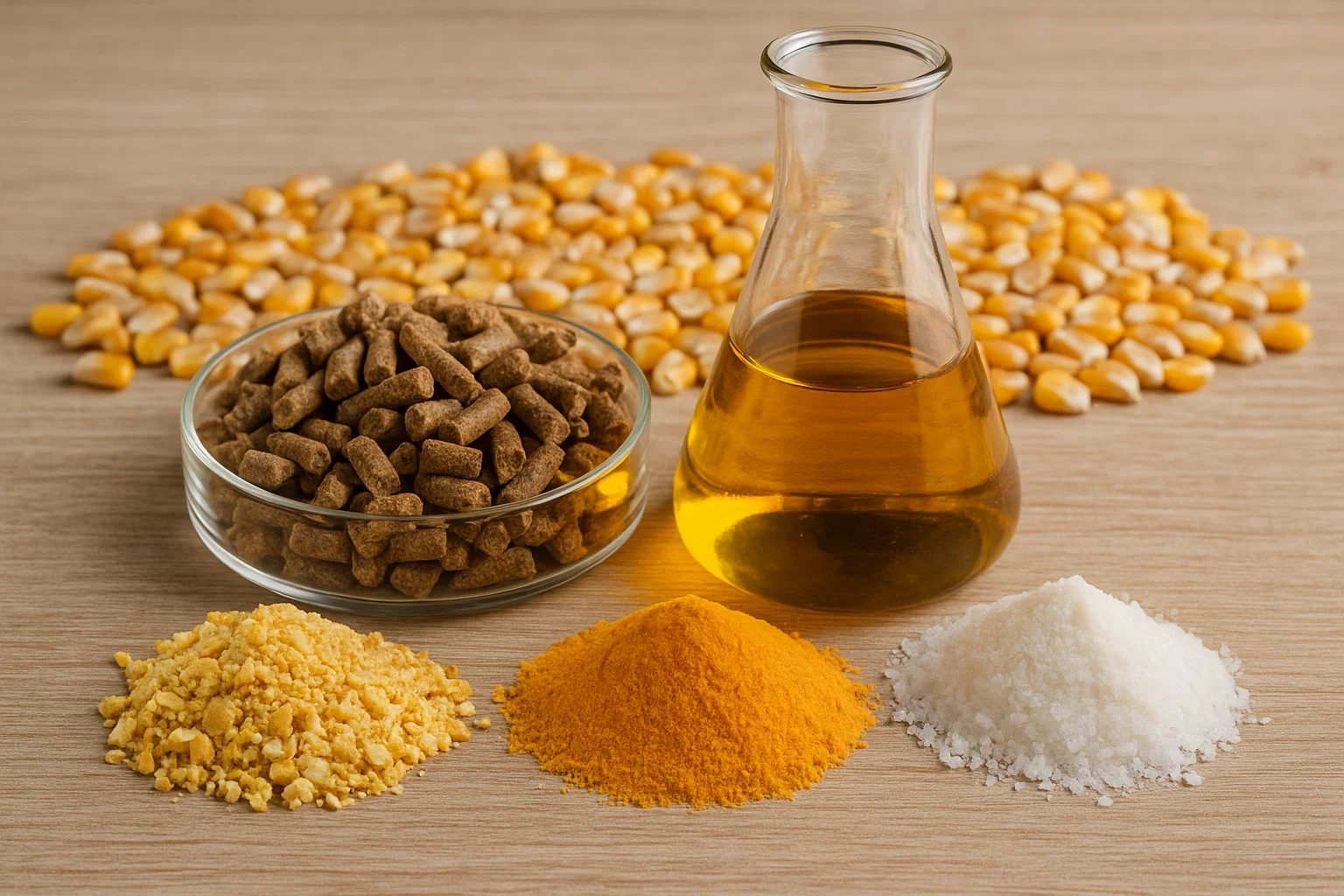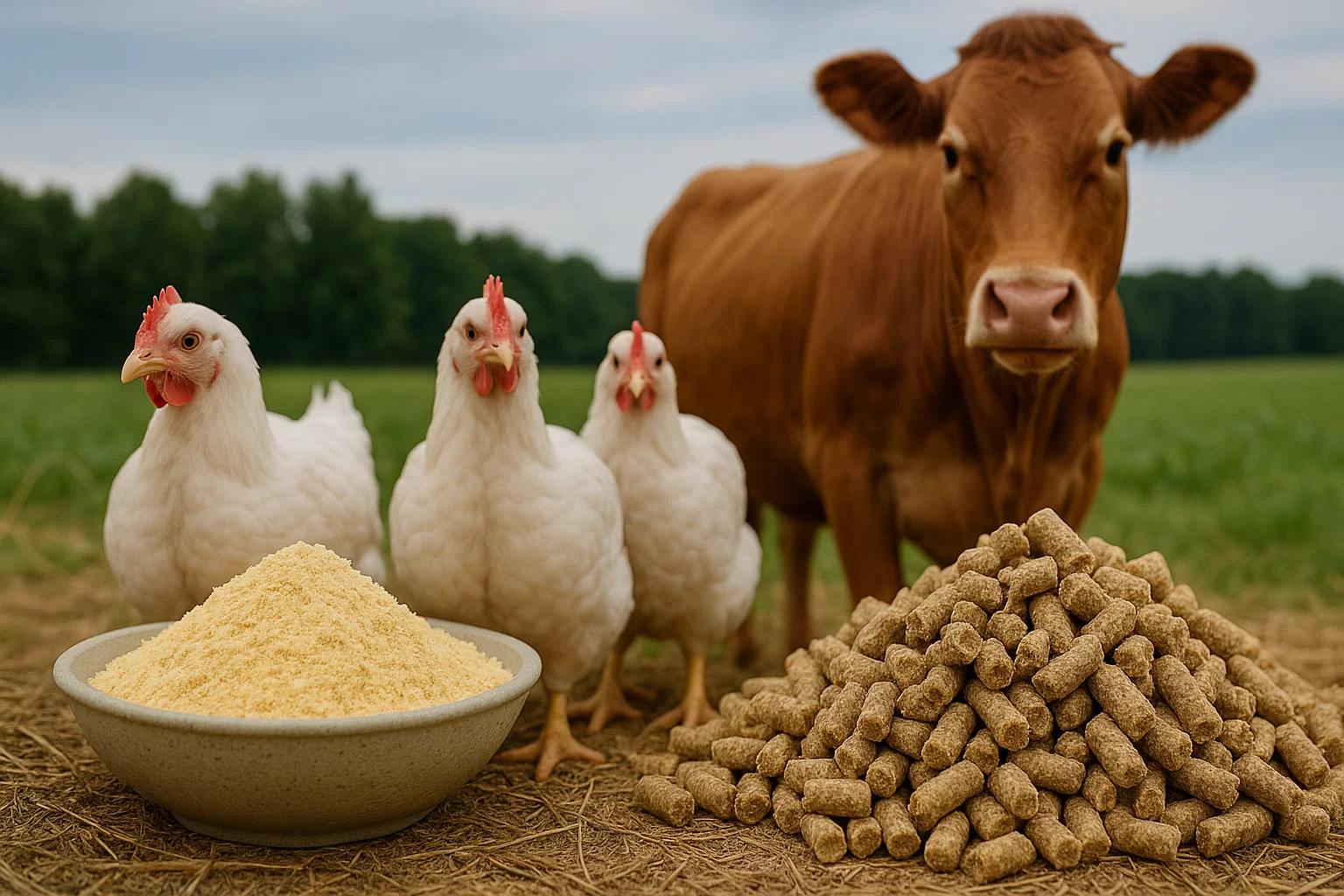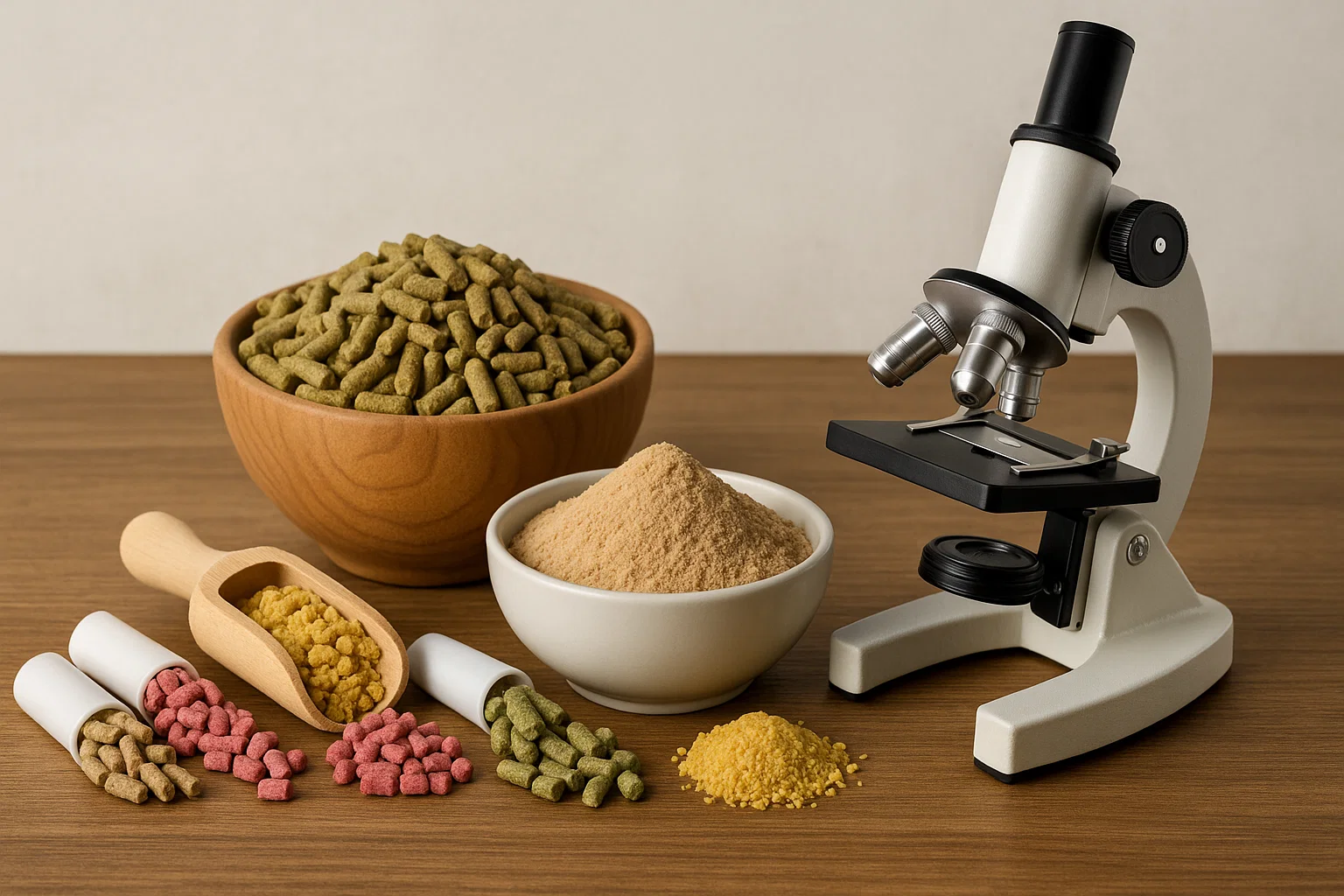Why Use Feed Additives to Promote Weight Gain?
Traditional Fattening vs. Enhanced Fattening
In traditional feeding systems, full reliance is placed on the base ration to provide the animal’s nutritional needs. While this may be sufficient in some cases, it doesn’t always help achieve maximum weight in the shortest possible time. Traditional fattening is slower and more prone to growth setbacks, especially during periods of dietary change or stress.
By incorporating feed additives for weight gain into the feeding program, the approach shifts to “enhanced fattening.” Additives act as growth accelerators by stimulating appetite, improving digestion, and strengthening the immune system. The result? A noticeable improvement in feed conversion rates and faster response to feed — whether in broiler chickens or beef calves.
The Role of Additives in Enhancing Nutrient Absorption
Animals and birds can’t fully benefit from what they eat unless their digestive system is functioning efficiently — and that’s exactly where additives come in.
In poultry: Enzymes break down complex fibers and starches, while probiotics restore microbial balance from the first week of life.
In livestock: Anti-bloat agents, active yeasts, and zinc supplements support digestion, especially in young cattle or during the early stages of fattening.
By minimizing nutrient loss due to poor absorption, additives help the animal get the most out of every component in the ration — reducing feed waste and increasing weight gain efficiently.
Key Types of Feed Additives for Poultry and Livestock
Natural Growth Promoters
Growth promoters have become a fundamental part of any professional fattening program — but not all animals require the same approach.
In poultry, fast-acting natural promoters such as herbal extracts or organic acids are commonly used. These activate the digestive tract from the first week and accelerate weight gain, especially in short cycles like 35-day broiler production.
In livestock, the focus shifts to long-acting additives that stimulate appetite and reduce stress caused by transport or feed transitions.
What makes natural growth promoters stand out is their safety profile. They leave no harmful residues in the animal’s body, which is a significant advantage for export-oriented farms and operations that aim for clean, residue-free meat or milk.
Vitamins and Minerals
There is no real fattening program without vitamins and minerals — but it’s not just about adding them; they need to be balanced and appropriate for the species.
Poultry requires higher concentrations of water-soluble vitamins due to their rapid growth and short production cycles, which increase nutrient loss.
Livestock, on the other hand, needs more complex mineral blends, including selenium, zinc, and copper, which support tissue growth and muscle development.
In both cases, a well-balanced vitamin and mineral profile improves immunity, energy levels, and feed efficiency.
Probiotics and Digestive Enzymes
This category often makes the biggest difference in performance, especially for animals or birds starting a new cycle or experiencing digestive stress.
In poultry, enzymes break down feed components that the body can’t naturally digest, boosting nutrient absorption from the very first week.
In livestock, probiotics and active yeasts help restore gut microbial balance in the rumen, preventing bloating and digestive disorders — particularly in young calves or post-weaning animals.
Using both together in the ration helps reduce digestive-related illnesses and significantly improves nutrient utilization.
Energy and Protein Supplements
These are not luxury — they’re essential for proper weight gain.
Poultry benefits from easily digestible high-energy sources like vegetable oils and essential amino acids to support rapid growth.
Livestock requires concentrated protein from plant or animal sources, preferably highly digestible, to ensure quick uptake and visible results in a shorter time.
A smart farmer always chooses the additive based on ration composition and the quality of raw materials, not just price or trend.
Do Feed Additives Differ Between Poultry and Livestock?
Nutritional Needs of Poultry
Poultry, especially in fattening operations, go through extremely short production cycles — which means every day counts. As a result, the additives used must be:
Fast-absorbing
Water-soluble
Effective from the earliest days of rearing
Poultry require strong support from enzymes, amino acids, and vitamins that enhance early immunity. The focus is on rapid muscle growth and improving feed conversion efficiency, which is best achieved through additives that act directly within the digestive system.
Nutritional Demands of Livestock During Fattening
By contrast, livestock typically go through longer cycles, and weight gain occurs more gradually. Therefore, the additives used tend to focus on:
Improving rumen digestion efficiency
Stimulating appetite consistently
Strengthening immunity during diet transitions or stress periods
Cattle, in particular, require precisely measured amounts of trace minerals and concentrated protein, and they are more sensitive to imbalances in the ration. This makes it crucial to choose well-calculated, carefully dosed additives.
Methods of Use and Mixing
Although the goal — weight gain — is the same, application methods differ completely:
In poultry, additives are often mixed into drinking water or sprayed onto dry feed in precise amounts. Uniform distribution is critical to ensure consistent results across the flock.
In livestock, additives are typically blended into daily feed rations or mixed in larger batches with compound feeds. In some cases, they are also offered in the form of lick blocks or compressed cubes.
Bottom line: Each species has its own nutritional needs and application methods. A successful farmer is one who understands these differences and applies the right product, the right way — to achieve the best possible results at the lowest cost.
How to Choose the Right Feed Additives Based on Your Farming Model
Choosing feed additives for weight gain isn’t a one-size-fits-all decision. The ideal product depends on your project type, production cycle, and your willingness to invest in a high-quality ration.
If you're running a fast-growth operation, like broiler poultry or veal calves, you need additives that act quickly and deliver results early in the cycle. In such cases, it’s best to rely on concentrated formulations containing enzymes, growth promoters, and fast-absorbing protein. The goal here is to reach optimal weight in the shortest time, with minimal mortality.
On the other hand, if you're managing a longer-term project, such as beef cattle or breeding farms, the focus shifts toward stability and sustained growth. These systems benefit more from balanced additives that support immunity and gradual muscle development, without overloading the digestive system or disrupting feed conversion over time.
Economic factors also play a critical role. An expensive additive isn’t always the best if it doesn’t deliver a measurable return. Conversely, a cheap additive might end up costing you more if it lowers production quality or causes digestive issues. That’s why you need to strike a balance between cost, effectiveness, and your feeding strategy.
In short, the decision is not only technical — it’s also a management and investment strategy. The smart choice begins with a clear understanding of your production goals, not just the type of animal you're raising.
Practical Experiences and Measurable Results from Additive Use
In many farms, the difference between a successful production cycle and one with losses comes down to a single detail — like the type of additive used or when it was introduced. Real-world experience confirms that using feed additives for weight gain correctly leads to visible improvements.
In one broiler farm running a 35-day cycle, a blend of probiotics and enzymes was introduced on day four. The result? Improved appetite, fewer digestive issues, and a final average weight 12% higher than the previous cycle without additives.
In a local calf-fattening project, a formula containing concentrated protein plus essential vitamins and trace minerals was used starting at weaning. Within 60 days, the feed conversion rate increased significantly, and target weight was reached two weeks ahead of schedule, with a noticeable drop in illness linked to weak immunity.
Farm owners confirmed that success isn’t about using more additives — it’s about using the right one, at the right time, and following mixing and dosage guidelines carefully.
Tips for Using Feed Additives Safely and Effectively
To get the desired results from feed additives without any negative side effects, their use must be carefully planned. Here are some key tips for farmers and livestock managers:
Read the instructions carefully: Each product has its own dosage depending on the animal type and growth stage. Don’t assume that all additives work for all animals.
Introduce gradually: Adding a new supplement too quickly can disrupt digestion. Start with a small dose for the first two days, then gradually increase.
Monitor the response: If you notice improvements in appetite, activity, or weight within the first week, that’s a sign the additive is working properly.
Ensure even mixing: Whether added to feed or water, make sure the additive is evenly distributed so that every animal receives the correct amount.
Buy from trusted sources: Cheap or counterfeit additives can ruin an entire production cycle. Always choose reputable and well-tested products available in the market.
Conclusion: The Smartest Strategy for Weight Gain Without Losses
Using feed additives for weight gain isn’t a luxury — it’s a powerful tool when integrated into a well-planned feeding program. The secret isn’t in using more, but in using smarter.
Poultry needs speed and efficiency, while livestock requires balance and long-term consistency. The right choice affects not just weight, but also profitability.
Once you understand the animal type, production phase, and the quality of your base ration, you’ll be in a strong position to select the most suitable additive — and build a successful fattening cycle with no waste, just results.
It all starts with the right scoop, at the right time, using the right formula.

